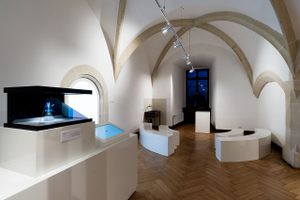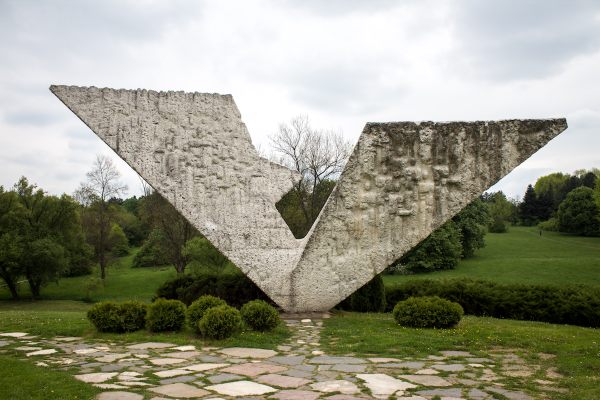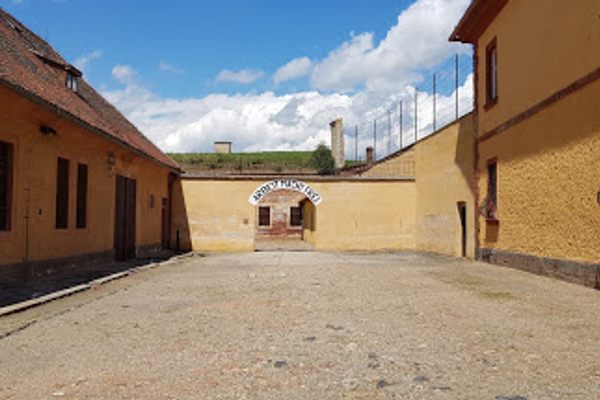About
This monument, dedicated to a local composer, can be found on the Neckarinsel, a man-made island in the Neckar River in Tübingen. Unlike most public artworks that were erected during the Nazi period, this statue was not destroyed after World War II. It is one of the last pieces of Nazi-commissioned art that remains in Germany, and now, local activists and artists are reclaiming it in an effort to educate visitors about how fascist regimes often appropriate the arts to spread their ideologies.
Friedrich Silcher was a German composer best known for his folk music. Born in 1789, he spent the majority of his life in Swabia, a region in southwestern Germany. His musical career reached its zenith in Tübingen, where he served as the musical director at the local university. There, Silcher devoted his research to the development of choir singing techniques.
Silcher also edited several song books, which were targeted to different audiences such as student fraternities, church choirs, and soldiers. Silcher’s best-known folk song might be "Muss i' denn zum Städtele hinaus," which would serve as the basis for Elvis Presley’s song “Wooden Heart” many years later.
Silcher set classical patriotic poems to music, and some of his compositions were later appropriated by social and political movements. Nazi authorities especially appreciated Silcher’s Soldatenlieder, or soldier’s songs, a genre that usually combines snappy marching rhythms with war-themed lyrics.
During the Nazi era, the practice of choir singing was exploited as a method to manipulate the masses through collective activities. Folk songs by Silcher and other composers were heavily promoted, and included in the songbook German soldiers carried in their backpacks during the war.
In 1939, the Nazi official Hans Rauschnabel aimed to honor Silcher by erecting a stately monument to the composer in the heart of Tübingen. But the plan was only partially realized: apart from a cornerstone ceremony in 1939, it was never officially inaugurated. It took two years to sculpt the monument, which consists of an oddly proportioned likeness of Silcher alongside several other figures, who seem to be growing out of his back: a couple kissing, a soldier, and a naked, heavily armed child.
The monument had not even been up for a month before the awkward piece of kitsch fell victim to a group of cadets who managed to graffiti the statue with funny faces. Between the cleaning and the ongoing international conflict, the monument was never formally inaugurated before the war ended.
Since the end of World War II, the statue has provoked several waves of criticism. So far, efforts to remove the monument have been unsuccessful, but locals did not want to leave it without any commentary. In 2012, a plaque was added to provide historical context. In January 2020, citizens of Tübingen, along with members of the Zurich-based art and activism collective New Urgency, rededicated the monument as a “memorial against the capture of the arts by racist and nationalist forces." At the rededication ceremony, three of Silcher's songs were sung, with lyrics adapted to fit the anti-fascist occasion.
Related Tags
Know Before You Go
The memorial is accessible without any restrictions all year long.
Community Contributors
Added By
Published
January 22, 2020
Sources
- https://kazolias.com/2016/08/30/the-holocaust-trail-a-german-town-remembers-its-nazi-past/
- https://www.nytimes.com/2014/09/07/travel/tracing-jewish-history-along-the-rhine.html
- https://de.wikipedia.org/wiki/Silcher-Denkmal
- https://www.gea.de/neckar-alb/kultur-in-der-region_artikel,-theatergruppe-erkl%C3%A4rt-silcherfigur-zu-mahnmal-_arid,6201508.html
- https://www.tagblatt.de/Nachrichten/Silcher-Denkmal-Umwidmen-statt-abreissen-442342.html
- https://nd-blog.org/2020/01/06/einweihung-des-mahnmals-gegen-die-vereinnahmung-der-kunste-durch-rassistische-und-nationalistische-krafte-fruher-silcher-denkmal/






















